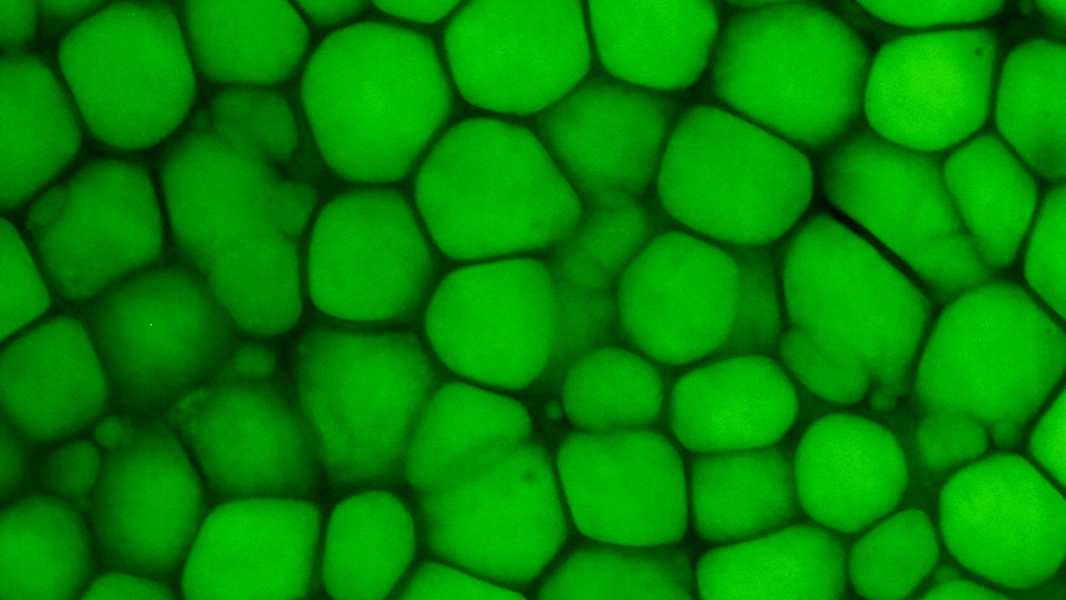
This is a newly discovered type of cartilage called “lipochondria.” This image shows tissue from the ear of a mouse containing fat bubbles in cells stained with green dye. (Image credit: Plikus Lab, University of California, Irvine)
Scientists say they have identified a new type of cartilage – one that was discovered in the 19th century, forgotten, rediscovered, and then forgotten again.
Medical textbooks describe three types of cartilage: hyaline, elastic, and fibrocartilage. Hyaline cartilage allows bones to glide smoothly over each other at joints; elastic cartilage is highly flexible and is found in the outer ear, voice box, and tube between the ear and throat; fibrocartilage is strong and absorbs shock in joints and the spine. The cells in these tissues are surrounded by significant amounts of collagen and elastic fibers, the ratio of which gives each type of cartilage its unique properties.
However, scientists now claim that there is a fourth type of cartilage that is significantly different from the others.
The tissue they call “lipocartilage” looks like adipose tissue—better known as fat. It’s made up of bulbous, oil-filled cells, and the cells are surrounded by a thin fibrous matrix rather than the thick matrix found in other types of cartilage. The cells are also very uniform and can be packed tightly together, like bricks. Together, the cells form a springy, soft tissue that has some pliability but is resistant to deformation and tearing; this tissue is found in structures such as the outer ear and nose.
Some experts were impressed by the new analysis of lipochondria. For example, Viviana Hermosilla Aguayo and Dr. Licia Selleri of the University of California, San Francisco, noted in a commentary that this “long-ignored type of cartilage” may “require an update to histology and anatomy textbooks.”
Others believe that the researchers have provided compelling evidence for the tissue's existence, but they are not sure that lipochondria should be classified as a separate type.
“The authors provide evidence that this lipid-containing cartilage tissue is present in many mammals, including humans,” Shoyang Zhu, director of the Osteoarthritis Research Lab at Ohio University, who was not involved in the study, told Live Science in an email. But “what I question is whether this should be considered a new distinct tissue type or simply a new feature of an existing tissue,” namely elastic cartilage.
What's old is new again
“This was an unexpected discovery,” senior study author Maxim Plikus, a professor in the department of developmental and cellular biology at the University of California, Irvine, told Live Science in an email. The team was studying the skin of the ears of mice when they came across fat-filled cartilage cells that Plikus compared to “bubble wrap.”
But as the team dug deeper, they discovered that their discovery wasn't entirely new. It turned out that other scientists had documented this unique tissue before, Plikus noted.
Sourse: www.livescience.com





